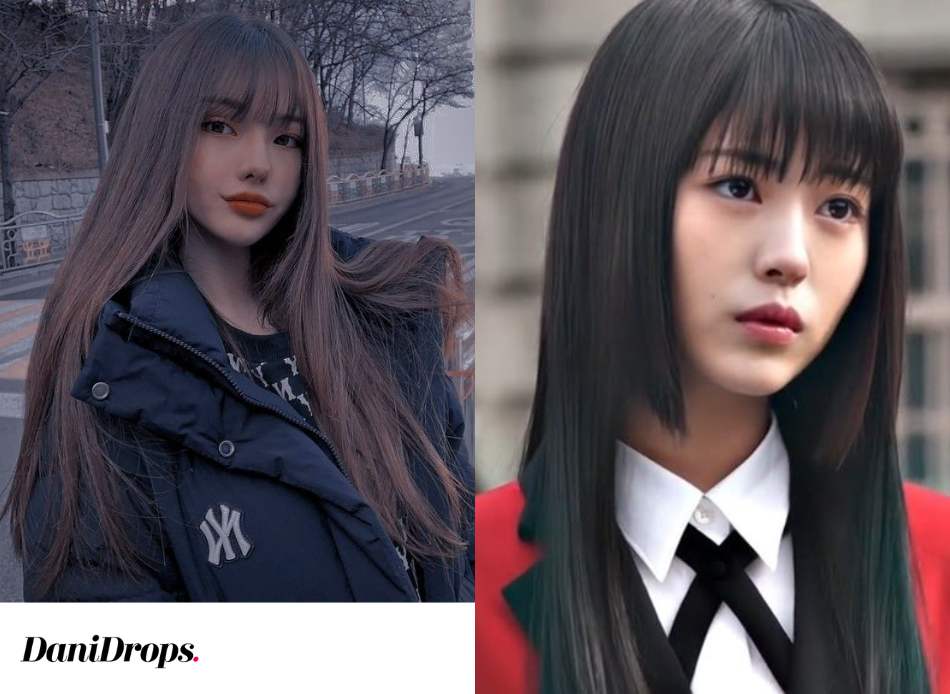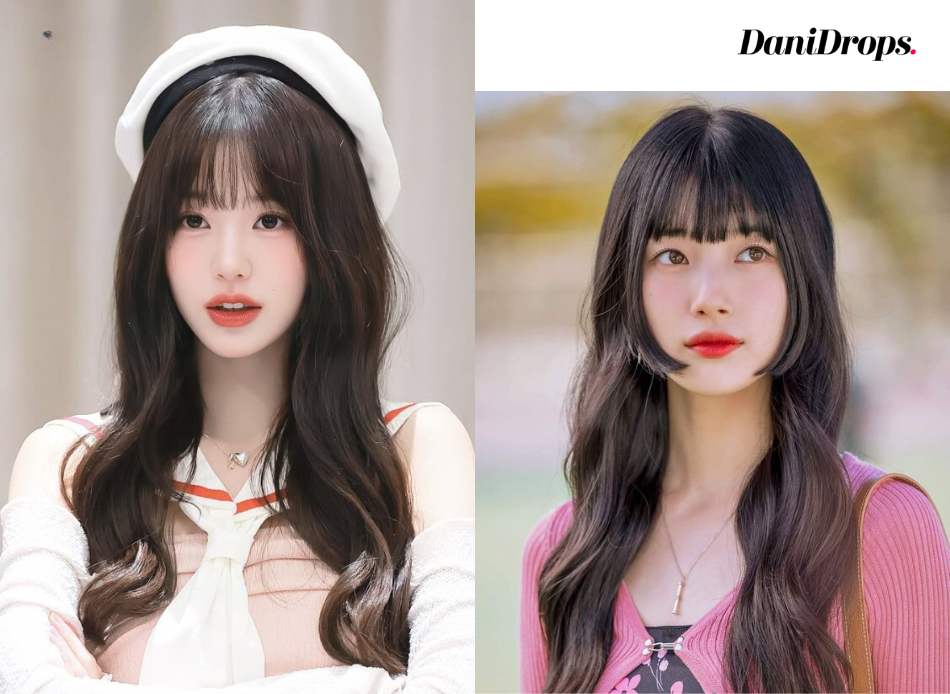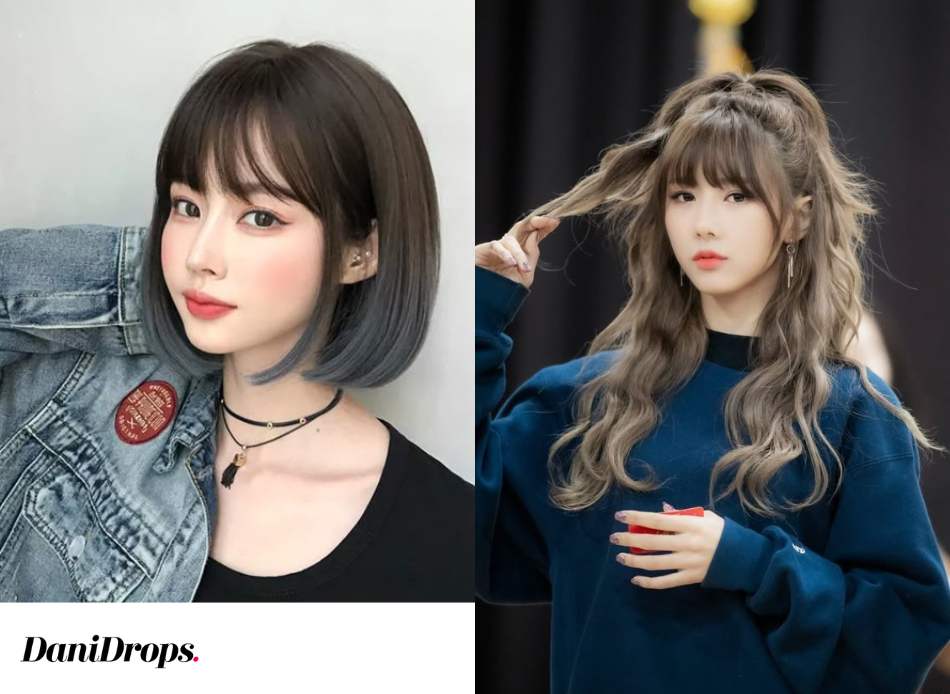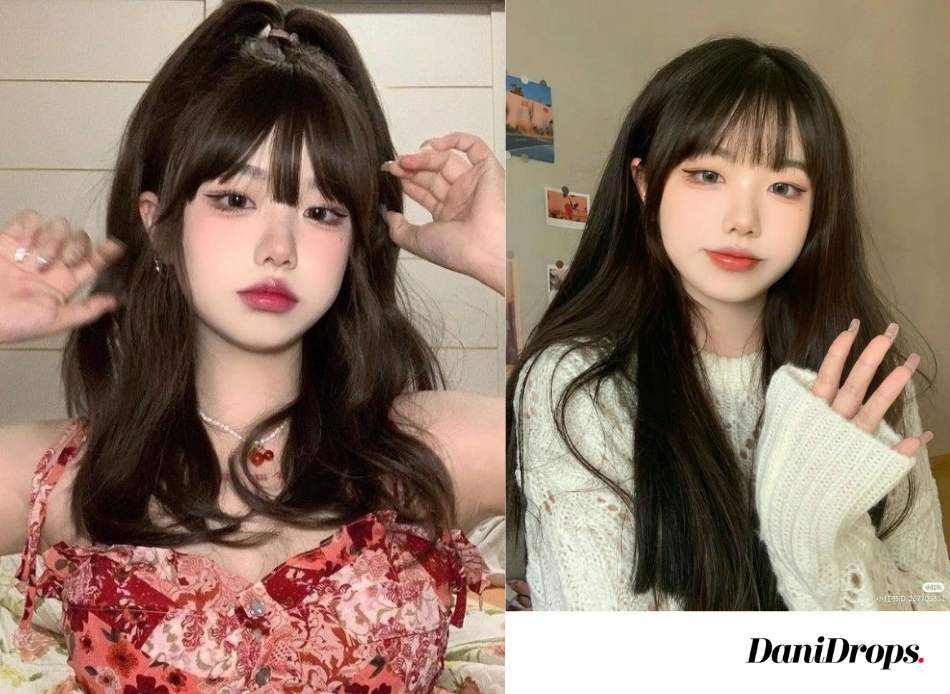The Japanese fringe is consolidating itself as one of the great haircut trends with bangs for 2025, bringing a touch of sophistication and modernity to the feminine look.
Known for its lightness and precision, this fringe combines elegant minimalism with the delicate charm characteristic of oriental styles.
Whether with a straighter cut or slightly frayed, it subtly enhances features and offers a youthful look, without losing class.

Ideal for those looking for a versatile look, Japanese bangs adapt to different face types and hair textures and cuts with bangs, making them a perfect choice for those looking to renew their look with style and elegance.

What is Japanese bangs?
The Japanese fringe It is a style of bangs inspired by traditional and modern Japanese cuts, known for its simplicity and elegance.

It is usually straight and cut above or just above the eyebrows, creating a soft, delicate look that subtly frames the face.

What makes this fringe so special is its lightness and the way it blends naturally with the rest of the hair, without looking heavy or too voluminous.

Additionally, it can have variations, such as slightly frayed ends or an arched cut, where the sides are a little longer, providing more movement and adaptability to different face shapes.

Popular among women seeking a youthful, clean and modern look, Japanese bangs are easy to style and can be used on both straight and wavy hair, which further increases their versatility.
What face types suit Japanese bangs?
The Japanese fringe It is quite versatile and can be adapted to different face shapes, but there are some types that go especially well with this style:

- Oval Face: This is the most balanced shape, and practically any type of fringe, including Japanese fringe, looks great. Straight or slightly arched fringe enhances the natural proportions, making the look even more harmonious.
- Round Face: Straight Japanese bangs can work really well, especially if worn with choppy ends or slightly longer sides. This helps to elongate the face and break up the feeling of it being too round.
- Heart Face: For this shape, where the forehead is wider and the chin is thinner, the slightly arched Japanese fringe, with elongated ends on the sides, creates balance, softening the forehead and giving more proportion to the face.
- Square Face: Those with more angular faces can soften the strong lines with choppy or slightly rounded Japanese bangs. However, a straight style should be avoided so as not to further accentuate the facial angles.
- Elongated Face: Straight Japanese bangs, cut above the eyebrows, are an excellent option, as they help to visually “shorten” the face, balancing the proportions.
The key to getting Japanese bangs right is to adjust the length and finish to the unique characteristics of each face, ensuring a harmonious and stylish result.
How to make Japanese bangs on your hair
Make the Japanese fringe It may seem challenging at home, but with a few simple tips and the right materials, you can achieve an incredible result. Here is a basic step-by-step guide to creating these bangs on your hair:

Materials needed:
- Hair scissors (suitable for cutting, do not use regular scissors).
- Fine comb.
- Clips to separate the hair.
- Mirror (preferably large, for clear vision).
Step by step guide to making Japanese bangs
1. Separate the fringe section:
Once your hair is dry and combed, use a fine-tooth comb to separate a small section of hair in the front. Draw a “V” or triangle shape in the center of your head, taking the amount of hair you need for your bangs. The more hair you take, the fuller your bangs will be. Secure the rest of your hair with clips to keep it out of the way.

2. Measure the length:
Think about how long you want your bangs to be. Japanese bangs tend to be cut just above or at the eyebrow level. To avoid cutting them too short at first, always start by cutting them a little shorter than the desired length and gradually work your way up.

3. Make the first cut:
Hold the section of bangs you separated between your fingers and cut straight across them in a smooth motion. Try to hold the scissors horizontally, but at a slight angle to follow the line of your fingers. You don’t need to cut them all at once — take your time to make small cuts.

4. Adjust the sides:
If you want that slightly arched effect where the sides are longer, hold the sides of your bangs and cut them at an angle, leaving the ends longer than the center. This will help soften the look and subtly shape your face.
5. Fray the ends (optional):
For a softer finish, use the scissors vertically and make small “sharps” at the ends of the bangs, creating a frayed effect. This will give your Japanese bangs a more fluid and natural look, especially if you want to avoid a stiff look.
6. Review and finalize:
After you’ve cut your bangs, comb them again to see if there are any adjustments that need to be made to the length or fraying. You can also use a blow dryer to style your bangs, directing the air downward as you comb to create a more polished finish.
Extra tip:
If this is your first time cutting your bangs, take it slow and cut them little by little. It's easier to trim a little more later than to correct if you cut too much! Now, just style and enjoy the modern, sleek look of your bangs. Japanese fringe!
Why are bangs so popular in Japan?
Bangs are extremely popular in Japan for several cultural and aesthetic reasons:
- Influence of Pop Culture: Many celebrities, anime characters, and J-pop (Japanese pop music) idols wear bangs. This creates a strong association with fashion, youth, and modern trends, making bangs a symbol of style.
- Cute Aesthetics (Kawaii): Japan highly values the “kawaii” aesthetic, which means “cute” or “adorable.” Bangs create a more youthful and innocent look, in line with this beauty ideal.
- Versatility: Bangs can be adapted to different face types and hairstyles, which makes many Japanese women see them as a practical and stylish option.
- Historical and Traditional Influences: There are influences from more traditional haircuts, such as the “hime cut”, which includes bangs as part of the style. This helps to perpetuate its popularity.
So bangs in Japan are more than just a passing trend — they're a mix of fashion, pop culture, and traditional beauty ideals.
You will read this article






Leave a Reply